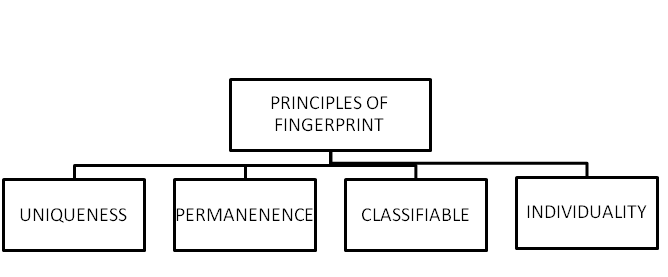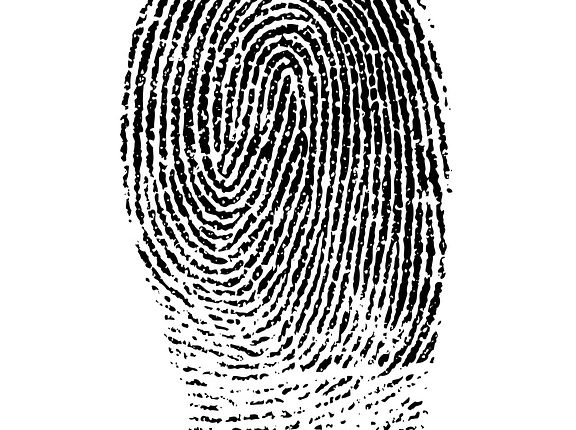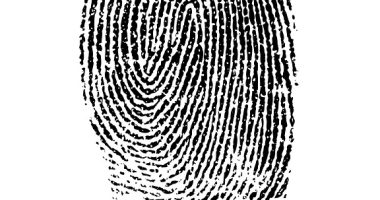As the fingerprint becomes the main part of policing and forensic science works. The main reason behind this is that fingerprint is unique and unchanging through the lifetime. Therefore, it is used as purpose for personal identification.
There are 4 basic principles of fingerprint – uniqueness, permanence, classifiable, universal.

- UNIQUENESS: the fingerprint is unique. No two individual posses same ridge characteristics. The acceptance of fingerprint evidence in the court of law based on assumption that no two individual posses the identical fingerprints. Not only by theoretical calculation, this principle was verified by the millions of individual who have had their fingerprint classified during the past years,. The FBI have nearly 50 million of fingerprint records in its computer database but as impossible to find two fingerprints are identical of two different persons.
The individuality of fingerprint is not based on its pattern or shape, but it is based on the ridges characteristics called as minutiae. The number, relative location and identity of the characteristics impart individuality to a fingerprint. The individuality is not based number, but also have the relative locations to one another in the prints.
The average fingerprints have as many as 150 ridge characteristics. For many years, experts have debated that how many ridge characteristics are sufficient to prove that two fingerprints are identical. Numbers from 8-16 have suggest to meet the criteria of the individuality.
2. PERMANENCE: a fingerprint is permanent and unchangeable during lifetime. The fingerprints are the friction ridges that are developed on the palm side of thumb and fingers. These frictions are provided during the birth to provide firm grasping and resistance to slipping. This friction skin consists of series of lines corresponding to hills are ridges and valleys are grooves
. Each skin ridges are pores that are opening to the duct leading from the sweat glands to discharge the perspiration and other substances that are deposited on the skin. The prints that are developed from the perspiration are the latent prints that are invisible by the naked eyes. The friction ridges appear before birth during third or fourth month of pregnancy. If an injury reaches deeply enough the skin , damages dermal papillae cause the fingerprint to change or delete.
3. CLASSIFIABLE : as the fingerprints have different patterns such as loops, whorls, and arches. As 60-65% percent of population have loops, 30-355 have whorls, about 5% have arches. These three patterns helps to classify the prints in all ten fingerprint classification.
4.UNIVERSAL: the palmer surface of the hand, finger carries the friction ridges. They allow individualization and classification. They are universal. Every criminal uses his hands for the commission of crime. Thus, they leave fingerprints at the crime scene or an object he touches. Therefore, fair chances of occurrence of fingerprint in all types of crime.
thus these are the principles of fingerprint help us to give the presence of someone at the crime scene and various technology to identify, visualize and verification of the fingerprint.
HENRY CLASSIFICATION OF FINGERPRINT
In 1897 , sir Edward Henry proposed a classification to arrange the various fingerprint patterns into a group known as henry classification, converted the ridge patterns of all ten fingerprints into letters and alphabets which can be arranged in the form of fractions.

PRIMARY CLASSIFICATION
In henry classification, primary classification all the fingerprints are divided into 1024 groups. The primary classification locates the position of whorl pattern and composite pattern of the fingerprint. 10 fingers of 2 hands are divided into 5 groups in following manner.
- RIGHT THUMB AND RIDHT INDEX -16
- RIGHT MIDDLE AND RIGHT RING – 8
- RIGHT LITTLE AND LEFT THUMB-4
- LEFT INDEX AND LEFT MIDDLE- 2
- LEFT RING AND LEFT LITTLE -1
After values of all 10 fingers are obtained, 1 is added to both the nominator and denominator. The fraction thus obtained is the primary classification of fingerprint.
If the whorl pattern is found on any finger of 1st pair, number 16 is assigned to it. On second pair, value is 8. On third pair value is 4. On fourth pair, value is 2. On fifth pair, value is 1. Any finger have loops and arch pattern, value assigned is 0. Approximately 255 of population have 1/1 value, it means all their fingers have arch or loop.
For example. If the right middle and left index contains whorl pattern and other fingers contains loops then the primary classification would be:
RT+RM+RL+LT+LR+1 / RI+RR+LI+LM+LL+1
0+8+0+0+0+1 / 0+0+2+0+0+1 =9/3
In this classification 1 is added to both numerator and denominator is according to the pigeon system. The five patterns provide 1024 combinations. The primary classification values caries from 1/1 to 32/32.
MAJOR CLASSIFICATION
The major classification is taking from the thumb of the hand. In this classification, only whorl and loop pattern is considered on the right and left thumb. Apart from loop and whorl pattern, if there is any another the number assigned to it is 0.
If there is a “loop” pattern then ridge counting will be done. As the loop contain 1 delta and 1 core. For ridge counting, draw an imaginary line from core to delta, and count the intervening ridges between them. If the ridge count is between.
0-12 – inner loop
13-19 – meet loop
19< – outer loop.

If there is “whorl pattern” found on the thumb then ridge tracing will be done. As whorl pattern contains 2 deltas and 1 core. The process of ridge tracing starts from the left delta towards the right delta and determines the no, of ridges traces between them to have 3 subdivisions inner (I), meet (M), outer (O).
If the intervening ridges moves inside and towards the right delta and ridges are between >3 – inner whorl
And if move towards outside of the delta and between >3- outer whorl
And between the deltas then – meet loop.
SECONDARY CLASSIFICATION
In this classification, the pattern present on the left index and right index finger will be considered. In this the pattern on it is represented by capital letter, the right index in the numerator and left index in the denominator.
Arch – A
Radial Loop –R
Whorl –W
Tented arch –T
Ulnar loop _ U
RI /LI = Arch (A) / whorl (W)
SUB –SECONDARY CLASSIFICATION
In this, index, middle and ring finger of both the hands will be considered. It locates the loop and whorl pattern.
For loop pattern, ridge counting is done in following manner.
| Index | Middle | Ring | |
| Inner (I) | 1-5 | 1-6 | 1-7 |
| Meet (M) | 6-12 | 7-13 | 8-14 |
| Outer (O) | 13 or more | 14 or more | 15 or more |
In whorl pattern, ridge tracing will be done. In the same manner as inn major division classification.
SECOND SUB SECONDARY CLASSIFICATION
It is used when the sub secondary classification ridge counting and ridge tracing is done and is based on the ulnar loop, composites, whorls, accidental and double loop is present in the middle and ring fingers. The pattern on the right is taken as numerator and the left are taken as denominator. The ulnar loop has 2 patterns:
- Invaded loop: the ridge passing over the pattern coming from the direction of the delta or trying to engulf the loop. Represented by (R).
- Nutant loop: in this pattern the loop is in the appearance of sickle cell and bends near the core of the delta. Represented by (n).
FINAL CLASSIFICATION
The final classification is made by recording the ridge counting of the loop and ridge tracing of the whorl pattern on the little finger. In case of whorl pattern, the ridge counting is performed in the manner for right little finger, the ridge counting is done from left delta to core of the pattern and for the left little finger, the ridge counting is done from right delta to the core .
In case of double loop, the ascending core is taken as constant for ridge counting and descending core will not be considered.
It will be represented in the form of numerical fraction.
RIGHT LITTLE (RL)/ LEFT LITTLE (LL)
KEY CLASSIFICATION
It involves the loops and whorl pattern of the right thumb only. In case of right thumb, the left delta is considered. The ridge counting of the loop and ridge tracing of the whorl pattern is consider.
subscribe to our blog for regular updates.







